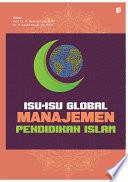Buku ini membahas tentang hukum maritim. Sebagai negara yang terletak di posisi geografis yang sangat strategis, yaitu diantara dua benua, Benua Asia dan Australia, diantara dua samudra, Samudra Hindia dan Pasifik, perairan Indonesia merupakan rute penting pelayaran internasional, baik yang bersifat komersil maupun pelayaran guna mobilitas suatu negara secara non-komersil. Hal ini tentunya membawa keuntungan ekonomis yang besar bagi Indonesia. Sebagaimana diketahui bahwa meskipun transportasi melalui udara menawarkan efisiensi waktu, transportasi lewat laut masih menjadi favorit pelaku pelayaran dan perdagangan internasional. Hal ini disebabkan karena transportasi lewat laut menawarkan kapasitas yang lebih tinggi daripada transportasi lewat udara. Dalam pelayaran dan perdagangan internasional, sampainya barang di tempat tujuan dengan tepat waktu sangatlah penting. Akan tetapi dalam pelaksanaannya, pengangkutan barang lewat laut sangatlah beresiko tinggi. Apabila dalam perjalanannya kapal mengalami kecelakaan, baik yang disebabkan oleh alam, maupun ynag disebabkan oleh human error, akan menimbulkan klaim-klaim ganti rugi. Buku ini mengupas secara komprehensif akibat hukum yang terjadi akibat pengoperasian kapal sebagai alat angkut lewat laut. Buku ini juga membahas regulasi-regulasi internasional yang sudah ada dan yang harus diperhatikan oleh pelaku pelayaran dan perdagangan internasional.
-
ISBN 13 : 6024328184
-
ISBN 10 : 9786024328184
-
Judul : Hukum Maritim
-
Pengarang :
Dhiana Puspitawati,
Renny Meirina,
Fransiska Ayulistya Susanto,
Renny Meirina,
Fransiska Ayulistya Susanto,
Renny Meirina,
Fransiska Ayulistya Susanto,
Renny Meirina,
Fransiska Ayulistya Susanto,
Renny Meirina,
Fransiska Ayulistya Susanto,
-
Kategori : Law
-
Penerbit : Universitas Brawijaya Press
-
Bahasa : un
-
Tahun : 2019
-
Halaman : 204
-
Google Book : https://play.google.com/store/books/details?id=iATQDwAAQBAJ&source=gbs_api
-
Ketersediaan :
Buku ini membahas tentang hukum maritim.










